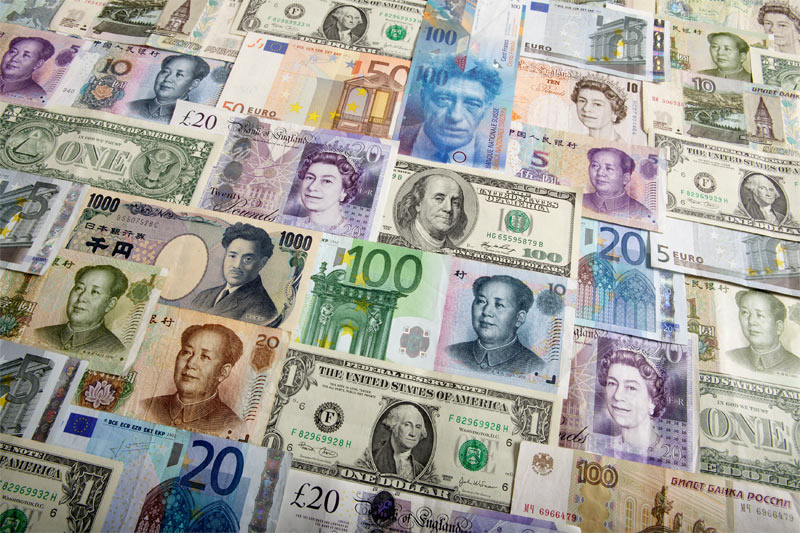Investing.com - The U.S. dollar was higher against the euro on Wednesday, as weak data out of the euro zone fuelled concerns over the deepening impact of the sovereign debt crisis on the region’s economy.
During European morning trade, the dollar was higher against the euro, with EUR/USD down 0.39% to 1.2934.
The euro’s losses came after data showed that the flash euro zone manufacturing purchasing managers’ index fell to 45.3 in October from a final reading of 46.1 in September. Analysts had expected the index to ease up to 46.6 in October.
A separate report showed that the euro zone’s service’s PMI inched up to 46.2 in October from 46.1 last month.
Germany’s flash manufacturing PMI fell to 45.7 in October, from a final reading of 47.4 in September, adding to concerns over the euro zone’s largest economy.
Elsewhere, a report by German research institute Ifo showed that its business climate index fell to100.0 in October, the lowest level since March 2010, from a reading of 101.4 in September.
The greenback was lower against the pound, with GBP/USD up 0.18% to 1.5979.
Sterling found support after Bank of England Governor Mervyn King said Tuesday that policymakers would have to think "long and hard" before implementing further quantitative easing measures.
Elsewhere, the greenback slipped lower against the yen, with USD/JPY dipping 0.07% to 79.78, but gained ground against the Swiss franc, with USD/CHF rising 0.30% to 0.9352.
The greenback was broadly lower against its Canadian, Australian and New Zealand counterparts, with USD/CAD slipping 0.13% to 0.9910, AUD/USD climbing 0.42% to 1.0309 and NZD/USD easing up 0.16% to 0.8130.
The Australian and New Zealand dollars remained supported after a report earlier showed that China's HSBC manufacturing PMI improved to 49.1 in October, compared with a final reading of 47.9 in September.
Meanwhile, in Australia, official data showed that consumer price inflation rose 0.7% in the third quarter, slightly better than expectations for a 0.6% increase.
The dollar index, which tracks the performance of the greenback versus a basket of six other major currencies, was up 0.19% to 80.18.
Later Wednesday, the Federal Reserve was to announce its benchmark interest rate and release its first monetary policy statement since the central bank announced a third round of quantitative easing in September. The U.S. was to release official data on new home sales.
Meanwhile, European Central Bank President Mario Draghi was to attend a meeting in Germany’s central bank, which was to be followed by a press conference.
During European morning trade, the dollar was higher against the euro, with EUR/USD down 0.39% to 1.2934.
The euro’s losses came after data showed that the flash euro zone manufacturing purchasing managers’ index fell to 45.3 in October from a final reading of 46.1 in September. Analysts had expected the index to ease up to 46.6 in October.
A separate report showed that the euro zone’s service’s PMI inched up to 46.2 in October from 46.1 last month.
Germany’s flash manufacturing PMI fell to 45.7 in October, from a final reading of 47.4 in September, adding to concerns over the euro zone’s largest economy.
Elsewhere, a report by German research institute Ifo showed that its business climate index fell to100.0 in October, the lowest level since March 2010, from a reading of 101.4 in September.
The greenback was lower against the pound, with GBP/USD up 0.18% to 1.5979.
Sterling found support after Bank of England Governor Mervyn King said Tuesday that policymakers would have to think "long and hard" before implementing further quantitative easing measures.
Elsewhere, the greenback slipped lower against the yen, with USD/JPY dipping 0.07% to 79.78, but gained ground against the Swiss franc, with USD/CHF rising 0.30% to 0.9352.
The greenback was broadly lower against its Canadian, Australian and New Zealand counterparts, with USD/CAD slipping 0.13% to 0.9910, AUD/USD climbing 0.42% to 1.0309 and NZD/USD easing up 0.16% to 0.8130.
The Australian and New Zealand dollars remained supported after a report earlier showed that China's HSBC manufacturing PMI improved to 49.1 in October, compared with a final reading of 47.9 in September.
Meanwhile, in Australia, official data showed that consumer price inflation rose 0.7% in the third quarter, slightly better than expectations for a 0.6% increase.
The dollar index, which tracks the performance of the greenback versus a basket of six other major currencies, was up 0.19% to 80.18.
Later Wednesday, the Federal Reserve was to announce its benchmark interest rate and release its first monetary policy statement since the central bank announced a third round of quantitative easing in September. The U.S. was to release official data on new home sales.
Meanwhile, European Central Bank President Mario Draghi was to attend a meeting in Germany’s central bank, which was to be followed by a press conference.
